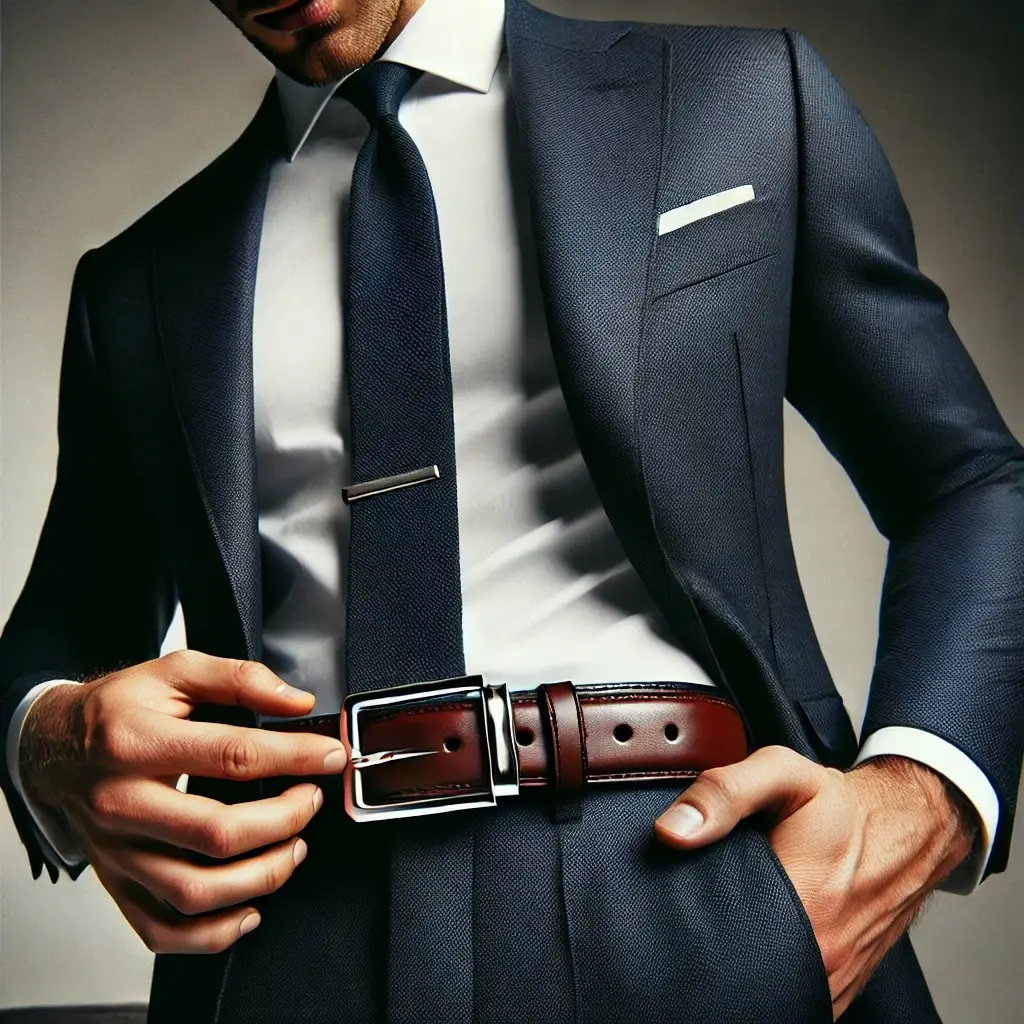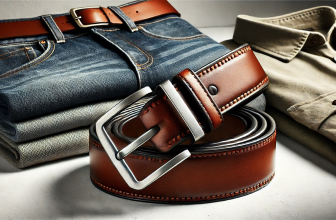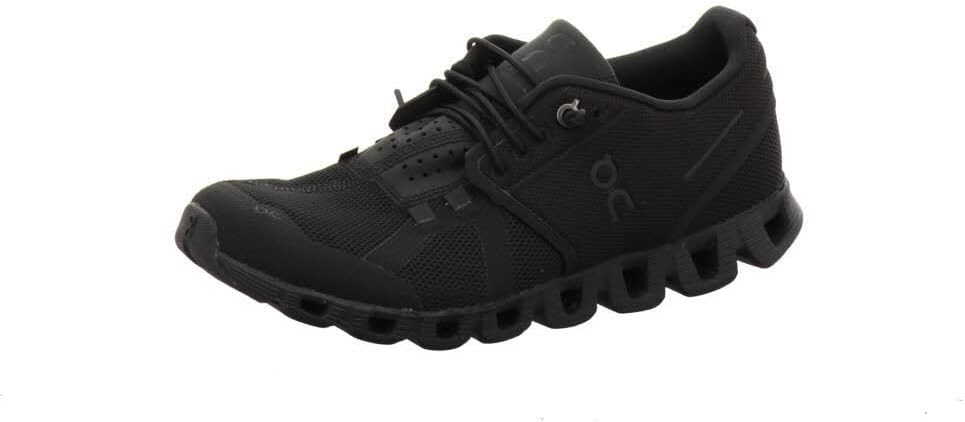
When it comes to dressing sharply in a suit, you might be focused on the cut, color, and shirt options, but there’s one accessory that can elevate your entire look: the belt. Many men find themselves uncertain about how to incorporate this essential item into their formal attire, often dismissing its significance. You are not alone in this; navigating the finer points of accessorizing can feel daunting. In this post, we will demystify the art of wearing a belt with a suit. From selecting the perfect belt to matching styles with your suits, you’ll gain insights that will help you create a polished and cohesive look that commands attention. Let’s explore how to harness this often-overlooked accessory to enhance your sartorial elegance.
Choosing the Right Belt
Selecting the right belt to wear with a suit is not a mere afterthought; it plays a vital role in defining your overall look. A well-chosen belt enhances your attire, showcasing your attention to detail and sense of style. Here are some essential considerations to ensure you make the right choice.
Material Matters
The material of your belt sets the tone for your entire ensemble.
- Leather Belts: The gold standard for formal attire, leather belts are synonymous with sophistication. Look for options from brands like Anderson’s or Beltology, which offer a variety of high-quality leather belts in both classic and modern styles.
- Fabric Belts: While less traditional, fabric belts can be appropriate for more relaxed suits, especially in summer. Brands like J.Crew and Banana Republic provide stylish fabric choices that can add a playful yet polished touch to your outfit.
Considerations:
- For formal occasions, stick to leather.
- For casual events or summer outfits, opt for fabric.
Color Coordination
A cohesive look relies heavily on color coordination.
- Matching with Shoes: Your belt should ideally match your shoes in both color and finish. For instance, if you’re wearing burgundy Oxfords from Johnston & Murphy, a matching burgundy leather belt will harmonize the look.
- Complementary Colors: If the color of your shoes is neutral, you can experiment with contrasting belt colors. For example, a navy suit paired with brown shoes can benefit from a tan or cognac belt from Hugo Boss.
Quick Tips for Color
- Black Shoes: Choose a classic black leather belt.
- Brown Shoes: Stick with brown leather belts, ideally in similar shades.
- Navy or Grey Suits: Tan and cognac belts can uplift your look.
Width Considerations
The width of your belt is equally important to ensure a balanced silhouette.
- Standard Width: A belt width of about 1.25 to 1.5 inches is generally appropriate for suits. Brands like Levi’s and Dockers offer belts within this range, ensuring they fit comfortably through standard belt loops.
- Bulkiness: Avoid wider belts that exceed the size of your belt loops as they can detract from the sharpness of your outfit. This is particularly crucial when aiming for a polished look.
Belt Width Quick Reference
| Suit Type | Recommended Belt Width |
|---|---|
| Formal/Classic Suit | 1.25 – 1.5 inches |
| Casual Suit | 1 – 1.5 inches |
Style and Design
Belt style is subjective but should align with your overall look.
- Classic Buckles: For a timeless appeal, choose belts with simple, elegant buckles. A classic black leather belt with a silver buckle from Calvin Klein can seamlessly fit into any formal setting.
- Textured or Patterned Belts: For a creative edge, consider belts with textures or subtle patterns. The Anderson’s Canvas Belt provides an interesting but sophisticated alternative for more relaxed settings.
Design Factors to Consider
- Buckles: Aim for minimalistic designs for formal settings; bolder buckles can work for business-casual.
- Finish: Matte finishes often feel more modern, while glossier belts provide a traditional touch.
Final Checklist for Choosing a Belt
Before you finalize your belt choice, refer to this checklist to ensure nothing is overlooked:
- [ ] Leather or Fabric: Have you considered the occasion?
- [ ] Color Match: Does the belt complement or match your shoes?
- [ ] Width: Is your belt the appropriate width for your suit’s belt loops?
- [ ] Style: Does the belt’s style align with your overall look?
- [ ] Fit: Is the belt comfortably adjustable, ensuring longevity?
By adhering to these guidelines, your choice of belt will not only complete your suit ensemble but also elevate your confidence, making a lasting impression in any setting.
Matching Belts with Suit Colors
When it comes to refining your attire, the belt is more than just a functional accessory; it’s a statement piece that complements your suit. Achieving the perfect harmony between your belt and suit color is vital for showcasing your sense of style. Below, we delve into essential principles of color coordination, practical examples, and tips to avoid clashing tones.
Understanding Color Coordination
The Importance of Neutrals
Neutral colors serve as the backbone of your wardrobe. They are versatile and adaptable, making them suitable for a wide range of suit colors. Here’s a breakdown of neutral belts you might consider:
- Black Belts: Ideal for dark suits, particularly charcoal and midnight blue. Brands like BOSS Hugo Boss offer sleek black leather belts that elevate a formal outfit.
- Brown Belts: Works well with earth tones like tan, beige, and olive suits. The Frye Logan Leather Belt in dark brown is a classic option that pairs beautifully with lighter shades.
- Navy Belts: A less common choice but highly effective with navy or light blue suits. Ted Baker’s Navy Suede Belt can add a refined touch without overwhelming your look.
Tips for Vibrant Suits
When you’re donning a more colorful suit, the belt becomes crucial in harmonizing your overall appearance. Here are some considerations:
- Match the Suit Color:
- If you own a rich burgundy suit, try the Calvin Klein Reversible Belt in burgundy. This creates a cohesive look that is eye-catching and polished.
- Contrast Harmoniously:
- For a bright teal suit, consider a tan belt like the Herschel Supply Co. Leather Belt that complements without clashing. This method creates visual interest while maintaining balance.
Successful Color Combinations
The following list outlines some winning combinations to help you make the right choices:
| Suit Color | Recommended Belt Color | Example Products |
|---|---|---|
| Charcoal Gray | Black | BOSS Hugo Boss Formal Belt |
| Navy | Brown or Navy | Ted Baker Navy Leather Belt |
| Tan | Dark Brown | Frye Logan Leather Belt |
| Light Blue | Tan or Dark Brown | Dockers Casual Leather Belt |
| Olive Green | Brown | Levi’s Reversible Leather Belt |
| Burgundy | Burgundy/Black | Calvin Klein Reversible Belt |
| Bright Yellow | Dark Brown or Navy | J.Crew Classic Leather Belt |
Avoiding Clashing Tones
To achieve a harmonious look, it’s vital to be mindful of potential clashing tones. Here are some common pitfalls to avoid:
- Avoid Too Many Colors: Stick to two to three main colors in your outfit. Overloading on colors can create a chaotic appearance.
- Match Materials: If your suit is made of a shiny fabric, opt for a belt that shares that sheen to maintain the overall visual cohesion.
- Stay Away from Bold Prints: While patterns can add personality, combining a patterned belt with a patterned suit can create confusion. Opt for solid belts when wearing patterned suits.
- Consider Undertones: Pay attention to the undertones of your suit color. Cool-toned suits (like blue) usually pair better with gray and navy belts, while warm-toned suits (like brown) suit earthy tones.
Practical Examples: Real Products
Incorporating real products helps demonstrate the effectiveness of the above advice. Here are specific brands and models that can elevate your belt game while matching with various suits:
- BOSS Hugo Boss Formal Belt: A classic black leather belt that seamlessly pairs with dark suits.
- Frye Logan Leather Belt: A sturdy and stylish brown belt that is ideal for pairing with earthy suit shades.
- Calvin Klein Reversible Belt: Offers versatility with its dual-color feature, perfect for mixing up your look.
- Dockers Casual Leather Belt: An affordable option that lends itself well to light blue or beige suits.
By keeping these guidelines and examples in mind, you can confidently navigate the intricacies of matching belts with suit colors, enhancing your overall appearance and making a lasting impression.
Belt Styles for Different Suit Cuts
Selecting the right belt to complement your suit can significantly enhance your overall appearance. Each suit cut—be it single-breasted, double-breasted, tailored, or relaxed—has its unique characteristics that dictate which belt style will best accentuate your look. Let’s break down the best belt choices for various suit styles.
Single-Breasted Suits
Characteristics
- Design: Features one row of buttons and a more fitted silhouette.
- Occasion: Versatile; suitable for formal office wear and business meetings.
Recommended Belt Styles
- Minimalist Leather Belt: A sleek, polished leather belt in black or brown works excellently with single-breasted suits. Look for brands like BOSS or Ralph Lauren, which offer belts that align well with classic tailoring.
- Example Product: BOSS ‘Santos’ Smooth Leather Belt
- Material: Genuine leather
- Color Options: Black, Dark Brown
- Width: Standard (around 1.5 inches)
Additional Features
- A subtle belt buckle enhances the elegance; a square or rectangular design is ideal.
Double-Breasted Suits
Characteristics
- Design: Features two parallel rows of buttons, often providing a more structured silhouette.
- Occasion: Typically worn for more formal events.
Recommended Belt Styles
- Traditional Leather Belt: A belt with a slightly wider profile (1.5-2 inches) complements the bold look of a double-breasted suit. Opt for belt styles from Paul Smith that incorporate sophisticated color choices.
- Example Product: Paul Smith ‘Signature Stripe’ Leather Belt
- Material: Leather with signature detailing
- Color Options: Navy, Black
- Width: 1.5 inches
Additional Features
- Look for a belt buckle that reflects understated elegance, such as a brushed metal finish.
Tailored Fit Suits
Characteristics
- Design: Closer fitting, emphasizing a modern silhouette.
- Occasion: Great for business casual events and semi-formal gatherings.
Recommended Belt Styles
- Textured or Patterned Belt: A belt with subtle texture, like a woven or pebbled finish, can add an interesting dimension to a tailored suit. Brands like Ted Baker offer options that work well.
- Example Product: Ted Baker ‘LITTO’ Woven Leather Belt
- Material: Genuine leather with a woven texture
- Color Options: Tan, Dark Brown
- Width: 1.25 inches
Additional Features
- Consider a belt with a unique buckle shape, such as an oval or round buckle, to further establish your individual style.
Relaxed Fit Suits
Characteristics
- Design: More room, often with a looser construction.
- Occasion: Ideal for casual gatherings and relaxed work environments.
Recommended Belt Styles
- Casual Leather or Fabric Belt: A more robust belt, either in leather with distressed finish or in durable fabric. Levi’s and Tommy Hilfiger offer great casual belt choices.
- Example Product: Levi’s ‘Reversible Casual Belt’
- Material: Faux leather with a matte finish
- Color Options: Brown/Tan
- Width: 1.5 inches
Additional Features
- A fun or bold buckle can elevate a relaxed outfit, possibly in a vintage or modern design to reflect your personality.
Belt Comparison Table
| Suit Style | Recommended Belt Style | Example Product | Color Options | Width |
|---|---|---|---|---|
| Single-Breasted | Minimalist Leather | BOSS ‘Santos’ Smooth Leather Belt | Black, Dark Brown | Standard (1.5 in) |
| Double-Breasted | Traditional Leather | Paul Smith ‘Signature Stripe’ | Navy, Black | 1.5 inches |
| Tailored Fit | Textured/Patterned | Ted Baker ‘LITTO’ Woven Leather | Tan, Dark Brown | 1.25 inches |
| Relaxed Fit | Casual Leather/Fabric | Levi’s ‘Reversible Casual Belt’ | Brown/Tan | 1.5 inches |
When selecting a belt for your suit, always aim for harmony in your outfit. The right combination enhances not only your style but also your confidence in wearing the suit. Consider these guidelines as a foundational approach to choosing perfect belt styles that harmonize with various suit cuts.
Mastering the Belt: Elevate Your Suit Game
In conclusion, incorporating a belt into your suit ensemble is a key element that merges functionality with style. By thoughtfully selecting a belt that complements the suit’s material, color, and overall aesthetic, you can significantly enhance your look and project confidence. Always remember that the right accessory not only completes your outfit but also elevates your presence, leaving a memorable impression. So, as you choose your next belt, keep these principles in mind to ensure your style is both polished and cohesive.












For those who want to step up their belt game, try a reversible belt! Brands like Fossil and Tommy Hilfiger offer some stylish options that are perfect for versatility.
Reversible belts are a fantastic idea! They’re practical and can save space in your wardrobe. Thanks for the recommendation!
I feel like the width of the belt is super important, too. A wider belt can look clunky with slim suits. Can you give some guidance on the best widths for different suit styles?
I love the tips you gave on matching belts with suit colors! But what about accessories? Can you do a follow-up on ties and pocket squares that go well with belts?
What do you all think about casual belts with suits? Like, can I wear a woven belt with a blazer, or is that a fashion faux pas?
I think wearing a belt with a suit can sometimes look too formal. Have you guys considered the no-belt look with suspenders? It can really change the vibe depending on the event!
That’s a great point! The no-belt look with suspenders can definitely give a more relaxed yet stylish appearance. I’ll explore that in a future post!
Great article! I wanted to add that leather belts can really elevate a suit, but make sure to condition them regularly. A tip I swear by is to use a good leather conditioner like Lexol to keep them looking fresh.
Thanks for the tip! Conditioning leather is definitely key to maintaining its look and longevity. Lexol is a great choice! I’ll consider writing more about leather care in future articles.
I have a hard time finding belts that fit right! Any suggestions on brands that cater to odd sizes?